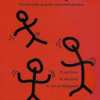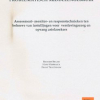Amphetamine

Stimulant use in Central & Eastern Europe: How Recent Social History Shaped Current Drug Consumption Patterns Jean-Paul Grund, Tomas Zabransky, Kevin Irwin, Robert Heimer
| Categorie: | Preventie en harm reduction |
| Bestandsgrootte: | |
| Bestandstype: | |
| Aanmaakdatum: | 04-18-2021 |
| Datum laatste update: | 04-18-2021 |
Gerelateerde documenten

Overdose prevention among hard-to-reach people who use GHB in the Netherlands and Belgium Mainline & CVO_oktober 2015
© CVO 2012
’Rapid Assessment and Response’ (RAR) on Problematic Substance Use among Refugees, Asylum Seekers and Illegal Immigrants Richard Braam Hans Verbraeck Franz Trautmann
.jpg)
Young people & injecting drug use in selected countries of Central and Eastern Europe
Editors
Jean-Paul Grund (Addiction Research Centre, Utrecht, and the Hague Department of Public Health, the Netherlands); Simona Merkinaite (Eurasian Harm Reduction Network (EHRN)).
Authors
Executive summary: Misha Hoekstra (independent consultant, Denmark); Chapter 1: Jean-Paul Grund and Simona Merkinaite; Chapter 2: Marion Nickolai (independent consultant, the Netherlands), Jean-Paul Grund, and Simona Merkinaite; Chapter 3: Damon Barrett (International Harm Reduction Association (IHRA)); Chapter 4: Caitlin Padgett (Youth Resources/Information/Support/Education (Youth RISE)), Jean-Paul Grund, and Simona Merkinaite; Chapter 5: David Otiashvili (Union Alternative Georgia), Jean-Paul Grund and Simona Merkinaite; Chapter 6: Jean-Paul Grund.

Naar aanleiding van een aantal incidenten, die in verband werden gebracht met het gebruik van XTC, is in 1994 een beleidsnotitie naar de Tweede kamer gezonden. Om de vragen van de Tweede Kamer te kunnen beantwoorden, die naar aanleiding van deze beleidsnotitie ontstonden, heeft het Ministerie van VWS drie landelijke werkgroepen in het leven geroepen: de werkgroep preventie en voorlichting, de werkgroep richtlijnen voor regelgeving, en de werkgroep onderzoek, registratie en monitoring(werkgroep 3).
CVO - Centrum voor Verslavingsonderzoek, 1998

Een verkennend onderzoek naar middelengebruik en verslavingsproblematiek onder asielzoekers en een aanzet tot doelmatige voorlichting en interventie
Richard Braam, Hans Dupont, Hans Verbraeck
RAR-handboek 2005

